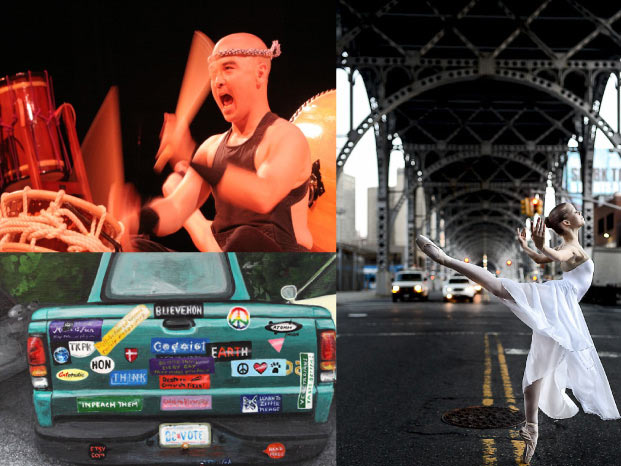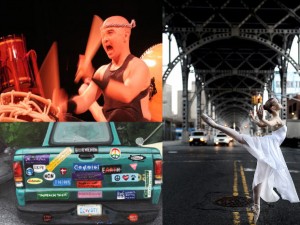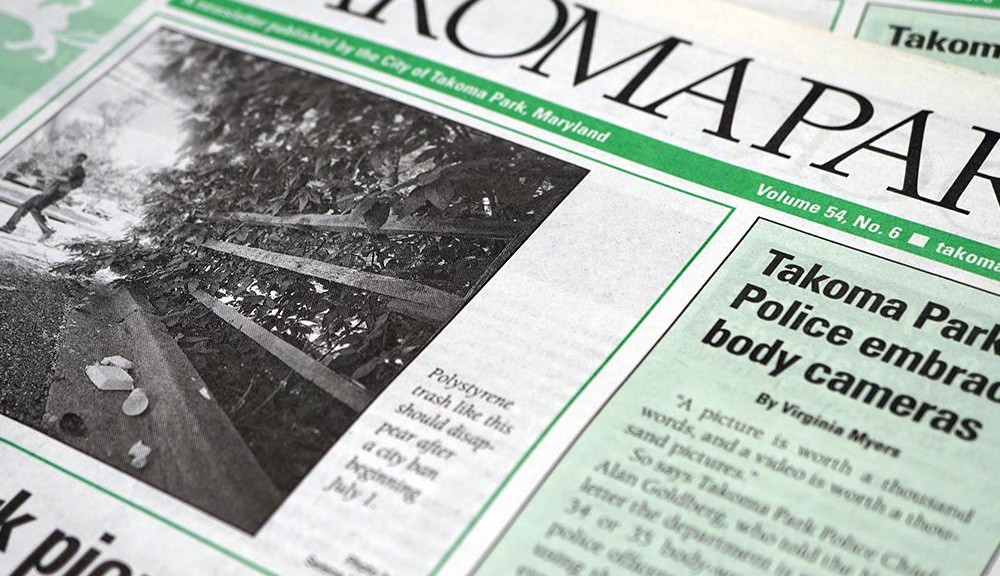Violent crime has decreased in Takoma Park over the last year, according to the annual Crime report released in late May. Overall crime, however, has increased, due in large part to a spike in vehicle related thefts.
Violent crime
Statistics comparing 2014 to 2013 show one homicide in 2014, and one in 2013 – in other words, no change. There were 35 robberies in 2014, down by one from the 36 robberies in 2013. There were 17 assaults in 2014, down from 20 in 2013. There was one additional rape reported in 2014 for a total of three – though one of the rapes reported 2014 actually occurred the year before.
Property crime
Overall, there was a 26 percent increase in “Part 1 Crime,” which includes homicide, rape, robbery, assault, burglary, larceny and auto theft. Property crime shows the most dramatic increase, with larceny in the lead. Larceny – when one person takes the personal goods of another, for example a purse snatching or theft from auto – went up 42 percent, by far the largest increase across the types of crimes committed in Takoma Park last year. Incidents went from 302 in 2013 to 430 in 2014.
Among those larcenies were 216 thefts from auto and thefts of auto parts.
Auto theft went up 26 percent, from 42 incidents to 53. Burglaries – which reflect breaking into a home with the intent to steal property – stayed the same, at 125 incidents.
Takoma Park Police Chief alan Golberg says the police campaign to urge victims of thefts from auto to report crimes was “very effective,” and the higher number of crimes recorded could be attributed to increased reporting in 2014. He also says that many of the thefts from auto involved unlocked cars.
Where are the crimes committed?
The annual Crime report breaks down Part 1 crime by ward, and shows that Ward 6 experienced the highest amount of crime – 27 percent of all crime reported in Takoma Park. It is followed by Ward 3, at 23 percent, and Ward 1, at 20 percent. Ward 2 had 13 percent of the city’s crime; Ward 5, 9 percent; and Ward 4 had the lowest, at 8 percent.
Ward 6 also had the most robberies – 12 incidents, representing 34 percent of all robberies in the city. Ward 3 was next at 10 robberies, or 29 percent. Ward 6 carried the most assaults as well: eight, or 47 percent. Next in assaults was Ward 2 with three, or 18 percent.
Larcenies were highest in Ward 6, too: 117 incidents, for 27 percent of larcenies in the city. Ward 1 had 101 larcenies, and Ward 3 had 97.
The police department also identifies “hot spots” where crime occurs most frequently. These areas are clustered along Takoma Park’s borders and around the commercial areas at Takoma Langley Crossroads, along the New Hampshire avenue corridor and in Old Town.
Who is committing these crimes?
More than half of the arrests made in Takoma Park in 2014 – 56 percent – were for controlled dangerous substances – i.e., illegal drugs. The rest are recorded as arrests for “uniform crime,” which includes the Part 1 crimes listed above. Juveniles were the subjects of 16 percent of all ar- rests; adults made up 84 percent of arrests.
Through the efforts of the department’s Special assignment Team to address gang violence and activity, and through investigations, police know that approximately 40 percent of the subjects either contacted or arrested in 2014 were connected to a specific criminal street gang. That means police are getting to these gangs: Through current and past investigative and enforcement efforts, gang-related incidents and crime in Takoma Park are at a five year low.
Especially important arrests included three drug busts: one on Cole avenue involving 10 arrests, $6,000 seized and forfeited, and a plea to distribution of controlled dangerous substances; one on Trescott avenue for seven arrests and one felony plea to possession with intent to distribute; and one on the Houston av- enue corridor for 17 arrests and multiple guilty convictions on auto theft, con- trolled dangerous substance, handgun of- fense and warrant services.
The report also describes in detail several notable incidents, including
- The assault of and robbery from a sex worker at gunpoint at a hotel on New Hampshire avenue
- The arrest of a man in possession of cocaine and ecstasy – in amounts indicating an intent to distribute – at a spot where families had gathered to watch the city’s Fourth of July fireworks
- a routine traffic stop that resulted in the arrest of a gang member for sexual assault of a minor
- Two burglaries that investigators linked through blood found at the scenes
- The rescue of a woman being held against her will in a hotel room by a man who was in possession of PCP, and who turned out to be a convicted murderer.
| Year | Homicide | Rape | Robbery | Assault | Burglary | Larceny | Auto Theft | TOTAL |
|---|
Part One Crime Comparison 2013-2014, Takoma Park| 2013 | 1 | 2 | 36 | 20 | 125 | 302 | 42 | 528 |
| 2014 | 1 | 3 | 35 | 17 | 125 | 430 | 53 | 664 |
| % Change | 0 | 50 | -3 | -15 | 0 | 42 | 26 | 26 |
Cell phones, borders, body cams and Narcan
Chief Goldberg noted that the most “in demand” items among thieves continue to be electronics, computers and cell phones. He also pointed out a pattern to crime in 2014: detectives linked a small group of criminals, affiliated with a street gang quartered outside the City of Takoma Park, to at least 19 of the city’s more serious crimes. Squelching gang crime continues to be a priority in the department. To address crime that travels across the many borders in the Takoma Park area, the chief also highlighted Takoma Park’s increased cooperation with other jurisdictions. “Criminals operate regardless of borders and jurisdictions,” he wrote in his report. “The ability to interoperate and have situational awareness with our neighboring jurisdictions is critical.” Using emergent technologies such as advanced radio communication and data analytics, the different police departments in the District of Columbia, Montgomery County, Prince George’s County and Takoma Park have been better able to address crimes of all sorts by working together. “Our crime analyst and officers are able to view real time and historical crime data from our neighboring jurisdictions as well as communicate with our allied agencies via radio directly,” wrote Goldberg. “This cross border communication remains one of my highest priorities.”
A newer program puts to use a different tool: Naloxone spray, also known as “Narcan.” The substance is best known for reducing the effects of heroin overdose, and is part of the Maryland Opioid Overdose Prevention Plan. Designed to reduce unintentional, life-threatening poisonings related to the ingestion of opioids, including not just heroin but prescription analgesics like Fentanyl, the plan helps prevent deaths by restoring breathing. Fifteen members of the police department have been trained to use Naloxone.
The chief, who delivered a preliminary crime report to the City Council in april while the nation was still reeling from the deaths of unarmed black men in police custody, also addressed the sensitive issue of police reform. He noted high marks for the Takoma Park Police Department’s officers on resident surveys, but said in his report, “We cannot sit on our laurels, and must continue to build partnerships and trust with our constituents.” To that end, the department has begun a body-worn camera pilot program as well as a Police Explorer Program for young people participating in the city’s summer jobs program in the coming fiscal year. That program is designed to promote strong understanding and support between police and the community.
It is also interesting to note that City Council added $10,000 to the recently approved budget for an outside consultant to evaluate police and community engagement – an attempt to identify what Takoma Park does well, and what lessons the city can learn from cities confronting racial conflict.
This article appeared in the June 2015 edition of the Takoma Park Newsletter. The Takoma Park Newsletter is available for download here.



